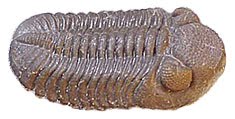Adventures on Earth column for September 15 edition of The Review
Continuing with our discussion of barrier islands, recent research seems to explain why some barrier islands continue to grow as sea levels rise and other to sink into the sea.
Conventional wisdom would seem to dictate that all barrier islands are in danger of being submerged as sea levels rise. But that is not the case.
As sea levels have risen, some barrier islands continue to migrate toward the mainland and stay above the waves.
Others migrate so slowly that rising sea levels overtake the natural course of replenishment.
The difference seems to be the base on which a barrier island stands.
Islands with a sand base, like North Carolina’s Outer Banks, are able to migrate ahead of rising levels. That is because there is plenty of sand at hand to replenish what would otherwise be lost.
As storms scour the seaward side of the islands, sand it washed into the sound where it accumulates on the landward side. And in some cases, beaches eroded in storms are later replenished as sand is transported through currents known as longshore drift.
Sand and sea interact, the sea moving sand from one area and depositing it in another.
In the case of the Outer Banks, inlets form and close as the sea overwashes the island, or transports sand to fill in the inlet.
Sand continually drifts into inlets, which are dredged to maintain channels for maritime shipping.
The configuration of Outer Banks islands is not the same as it was in Blackbeard’s time. Blackbeard was a master of navigation between shoals. He would be at a loss today because channels he used have filled in and new channels have replaced shoals.
Islands have changed their shape as the sea rearranges sand to suit its fleeing whims.
All of that rearranging of sand gives the barrier islands of the Banks a strong foundation, allowing sand to build up.
Barrier islands along the Gulf of Mexico coast are not based on sand, but mud that is deposited from rivers flowing into the Gulf. It is mud that forms the Mississippi Delta and the bayous along the coast.
The mud is not a stable base, so as sea level rises islands tend to sink.
Researchers have studied the Chandeleur Islands off Louisiana. Those islands are not able to reacquire sand as they migrate landward, so they are slowly sinking.
The researchers are turning their attention to other barrier islands. Those off the coast of Virginia and Maryland and other areas of the Gulf Coast will be studied to see if the patterns hold up there.
Barrier islands, remember, protect the coast from storms. As storms approach the barrier island is hit first. Robbed of heat and moisture from the sea, the storm loses its punch. The barrier island also absorbs storm surge that otherwise would be more damaging inland.
If barrier islands are lost, storms will vent their full fury on the coast.
The attempts of humans to protect barrier islands through breakwaters or sea walls interfere with the transport of sand and ultimately work against the intentions of the builders.
As currents transport sand, it eventually ends up where it will help rebuild the island as it moves.

No comments:
Post a Comment